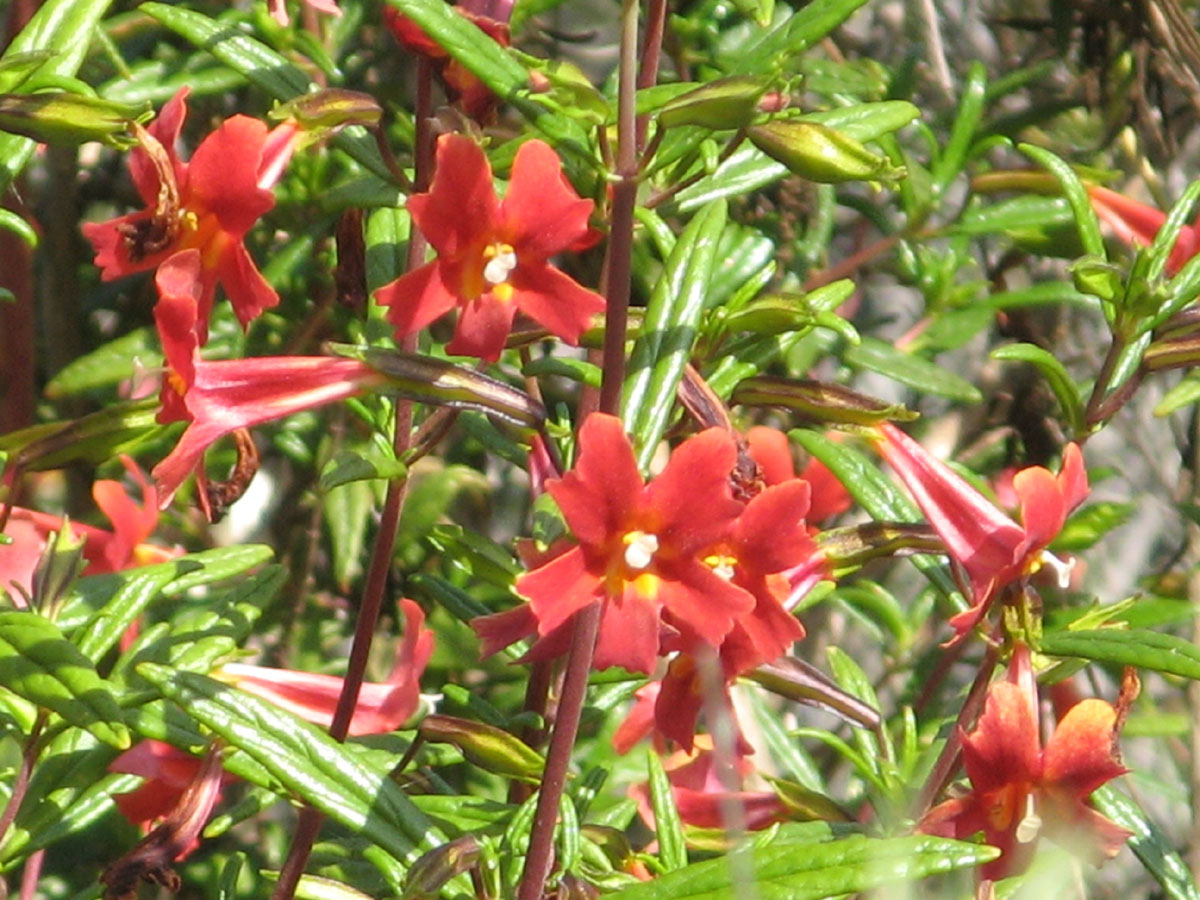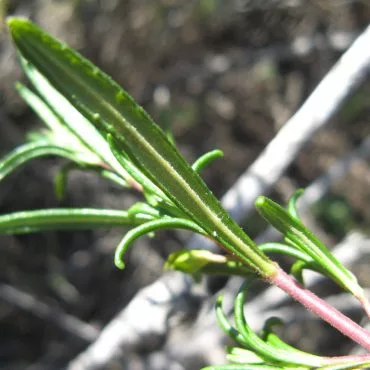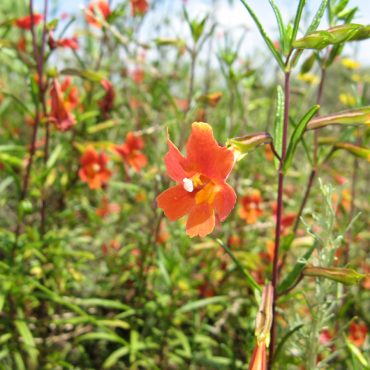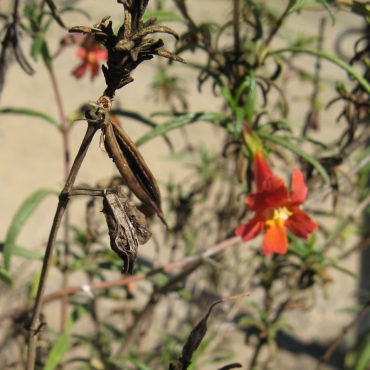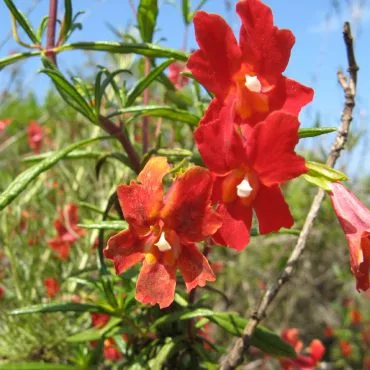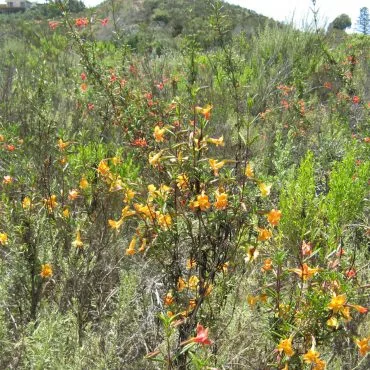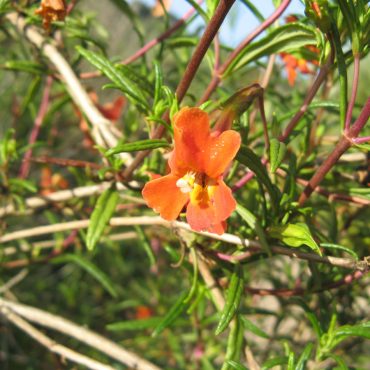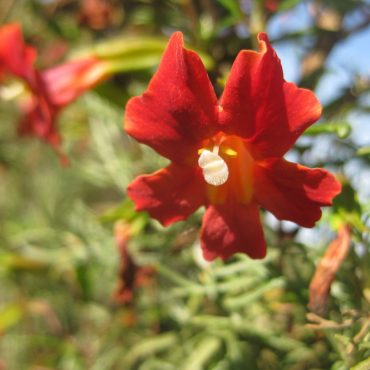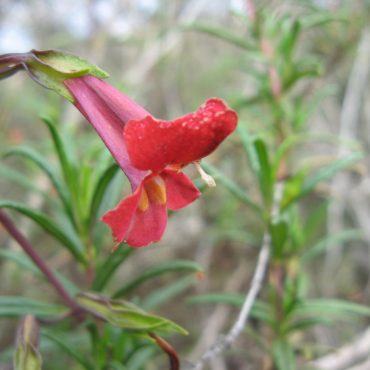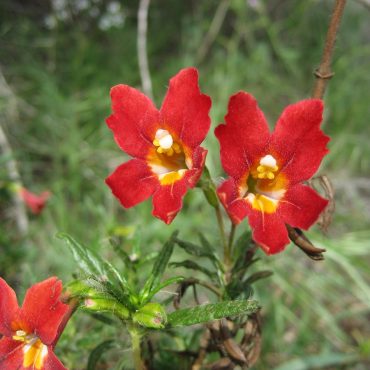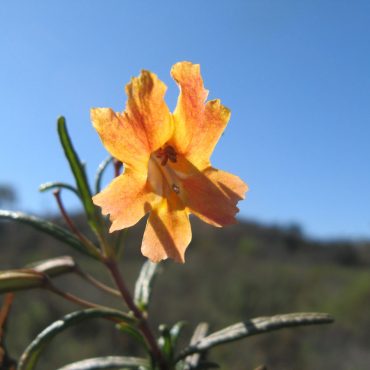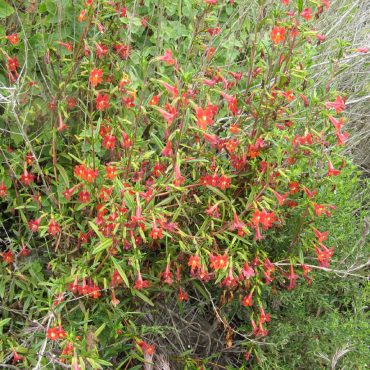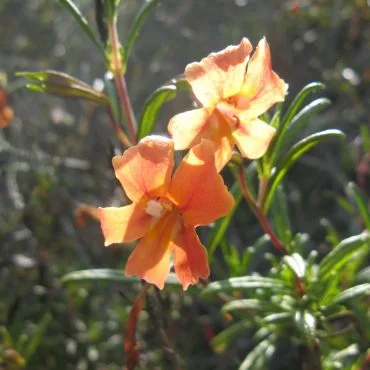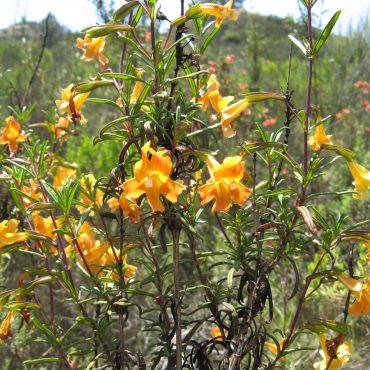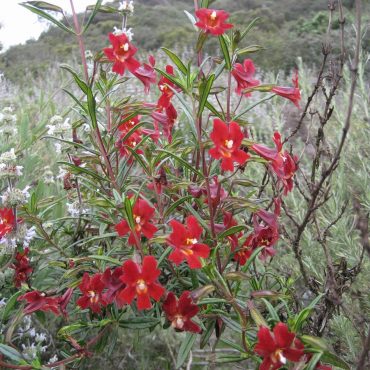Classification
Bush monkey flower is a dicot angiosperm. For many years, monkeyflowers were considered members of the fiqwort family (Scrophulariaceae) but they were moved to the lopseed family (Phrymaceae) in 1998 on the basis of DNA sequencing.(84,88) Many available references still present the earlier classification system. Bush monkeyflower is the only species of Phrymaceae reported in the Reserve.
The taxonomy of bush monkeyflower is a tangled subject that most sane people will want to avoid. There are many regional variants with intergrading hybrids;27 between one and thirteen species have been recognized in California.24 This uncertainty as to species’ boundaries is confounded by the fact that, as of 2018, bush monkeyflower is listed both in the genus Mimulus and in the genus Diplacus. As the most local authority, we follow the policy of the Jepson Manual and call our species Mimulus aurantiacus;2
The different species/varieties are generally distinguished by flower color and by the degree and location of pubescence (presence of small hairs). Most of the plants in the Reserve have flowers that range from salmon and orange to bronze to red, and have little or no pubescence. This places them in the puniceus group, recognized as a variety by the Jepson Manual: Mimulus aurantiacus var.puniceus.
Note: as of Nov. 2018, Jepson has adopted Diplacus puniceus as the official name.
Jepson eFlora Taxon Page

